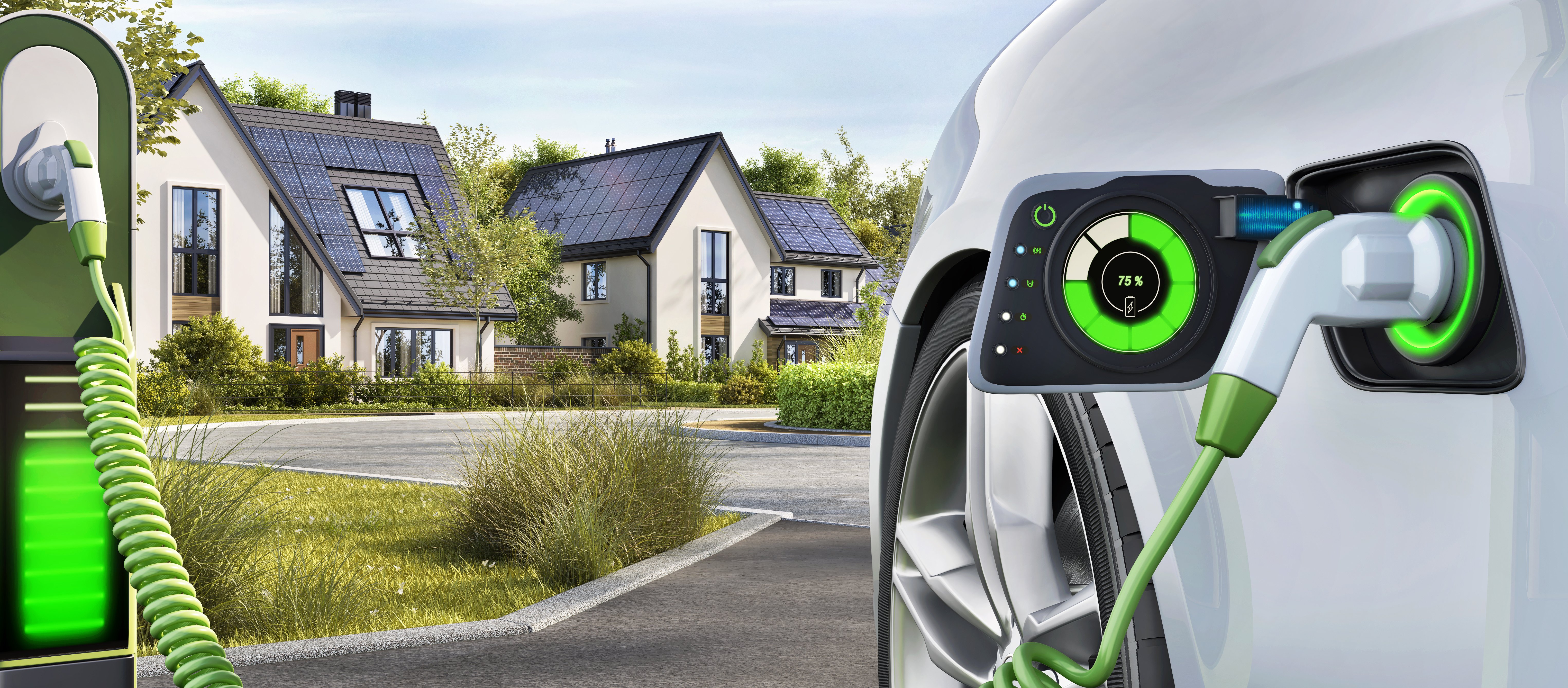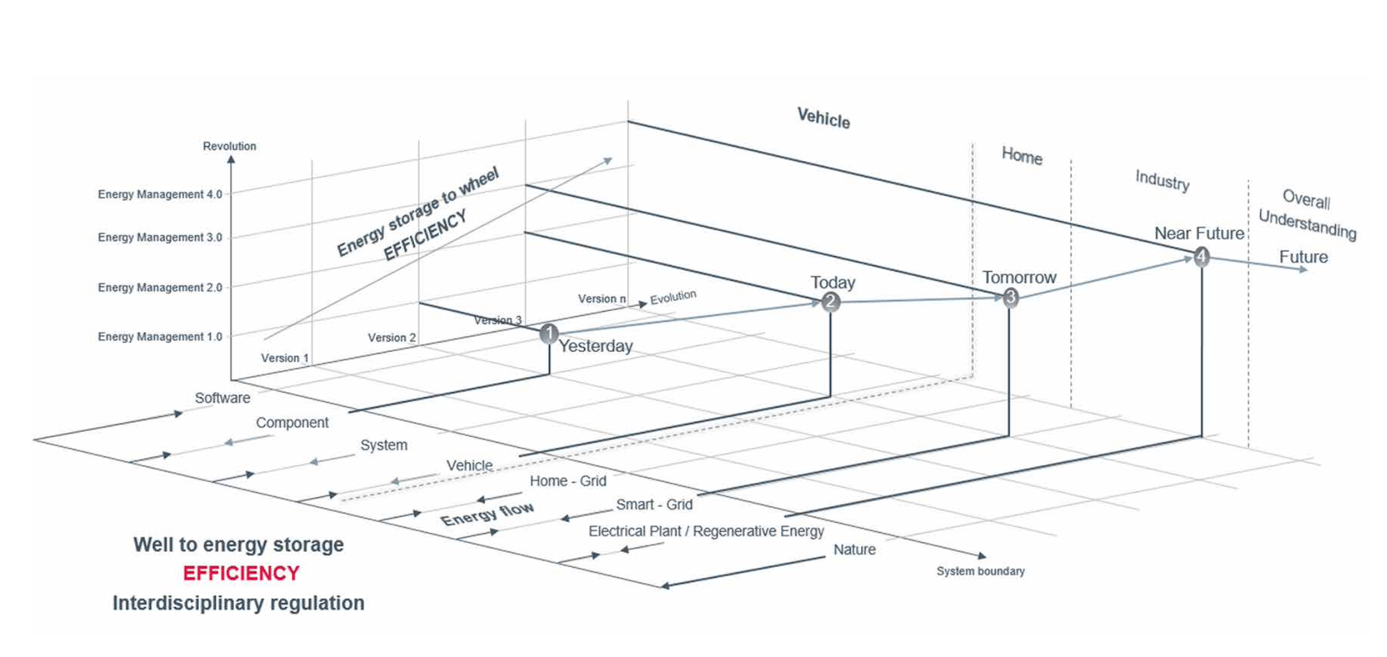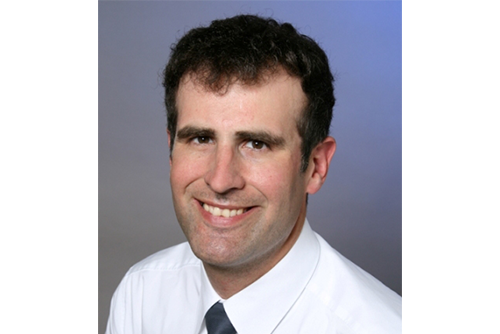In the past, energy management in vehicles was mostly about dealing with electricity consumers as efficiently as possible. Today's electric cars are radically changing that. AI enables them to find out for themselves when the driver(s) will need how much power in the battery and, at the other times, to earn money independently as participants in an electricity network ("grid") with the battery capacity. The networking of a vehicle with the manufacturer makes it possible to collect empirical data on the energy flows in the vehicle. The OEM can then optimise energy management and feed it back into the vehicle via software updates. Even more is possible.
Energy management has changed a lot over the years. In the early days of the automobile, batteries were only important for starting the exterior lighting, but since the turn of the millennium at the latest, the multitude of electrical consumers has made energy management necessary. The electric car brought new momentum to this topic. And the next major leaps in energy management are already on the horizon.
Experts distinguish between four different evolutionary stages:
Energy management 1.0 (from 2000) - only small consumers
The vehicle must regulate the consumption of the low-voltage (LV) devices in the on-board network. This includes, for example, the radio central locking system, navigation system, (parking) heater, entertainment systems and many other small consumers.
Energy management 2.0 (from approx. 2012) - including electric drive systems
With the introduction of high-voltage (HV) systems for electric drive in hybrid and electric vehicles, vehicle developers need to develop and implement new energy strategies (within physical limits and known historical measurement data). Particular focus is on:- the control of currents on the consumer side
- power management within the battery (for high power requirements)
- charge current management (also under thermal aspects)
This form of energy management is currently state of the art.
Energy management 3.0 (from 2020) - networked vehicles
From around 2020, cars will no longer be solitary vehicles, but rolling networked computers that exchange data intensively (in both directions) through a permanent cloud connection. This includes:- Data exchange on the ageing behaviour of batteries
- Software updates for an optimised operating strategy for battery utilisation
- Automatic navigation to available charging stations
- Externally controlled, intelligent charging management to support smart buildings, smart grids and decentralised energy storage.
Although energy management is already highly networked in this context, it is often determined by manufacturers' specifications and optimisations.

Energy management 4.0 (from approx. 2025) - actively controlling vehicles
In the fourth stage, it is no longer the manufacturer's operating strategy (which may be adapted by current data and fed back in the form of software updates) that determines energy management, but the vehicle itself. The vehicle itself uses empirical data from the individual past, such as- the battery status and charge level.
- the driver's usage behaviour (including evaluation of his schedule)
- Price signals from local energy suppliers
- Calendar, weather and traffic data
The focus is on the most important resource of an electric car: its battery. With current capacities of 50 to 120 kWh, it has a much larger storage capacity than, for example, the electricity storage of a house solar system (usually 6 to 8 kWh). However, drivers only use their cars for a few hours a day, and the rest of the time they sit around unused.

The modern evolutionary stages of energy management use the possibilities of smart grids and smart contracts to use the e-car as part of an energy network.
The vehicle becomes an electricity broker
An active vehicle therefore connects its energy management to local energy grids to actively buy, store and later offer electricity again (without manual "permission" from the owner and taking into account the cyclability of the energy storage). It can establish the necessary contracts itself on a daily basis via smart contracts and takes into account the most likely usage scenario of the vehicle via artificial intelligence and neural networks. To do this, it also draws on information from other platforms and from the internet.
For example, it can store the excess cheap wind power in the battery on a stormy night and offer it again at a high price in the morning from 6:00 a.m., when the population needs the power for breakfast - but only enough so that the driver can also safely make his way to the office and the appointments in his diary from 7:30 a.m. onwards.
In the best case, the user hardly has to worry about the energy management of his vehicle and can watch as the car itself earns the money for the electricity it needs for its journeys. In the process, the user can specify what kind of electricity (only sustainably produced) the vehicle is allowed to trade.
Not only vehicle users and energy suppliers benefit from this networking, but also the OEM to whom the vehicle fleet supplies data. It can itself act as a data provider for energy decisions and offer this as a service.
Ultimately, the vehicle merges with its environment as part of a comprehensive energy network and becomes an important part of the energy supply.
General Technical Conditions for Energy Management 4.0
In order to be able to implement Energy Management 4.0, numerous technical developments and a comprehensive energy end-to-end system approach in electronics development ("E4" for short) are necessary. This includes:- an electrical/electronic architecture that provides for a central control unit, which can also be a domain or high-performance computer.
- compatibility with AUTOSAR Classic and AUTOSAR Adaptive
- sophisticated fault management in the event of a loss of connectivity to the cloud or failure of individual components in the vehicle
- advanced battery management for high currents depending on ageing and thermal management
- an interdisciplinary development approach for energy management across all areas of a vehicle
Further information and downloads
The energy management of the future could only be touched upon in this blog post. You can find much more detailed information in the white paper "Energy Management 4.0 - Evolutionary Stages for Electric Vehicles", which you can download free of charge.
Do you have specific questions? Then contact Head of EA Systems Design, Martin Holger, who will be happy to assist you with his extensive knowledge. Just send him an e-mail to: energiemanagement@edag.com






